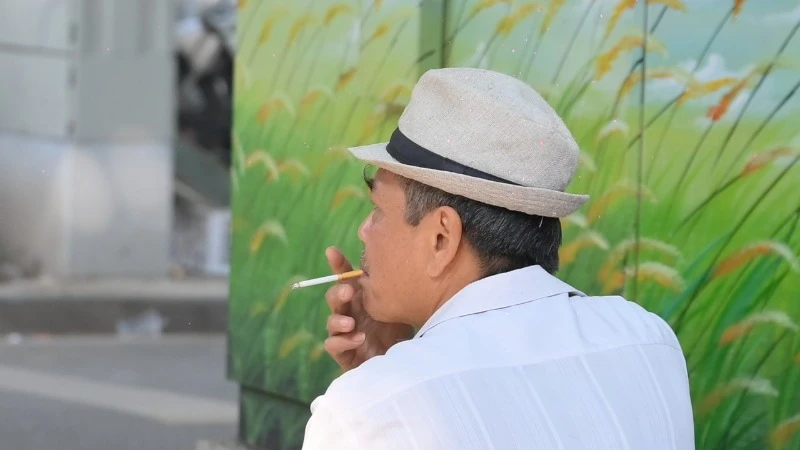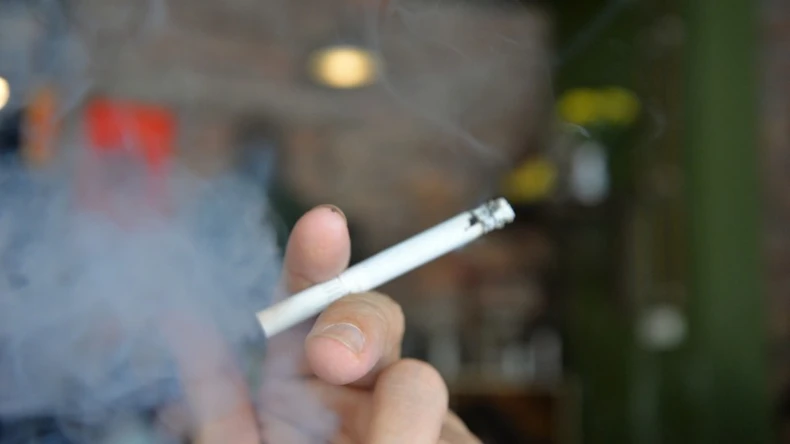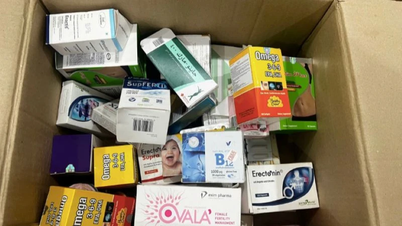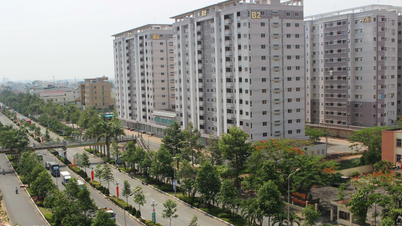NDO - It is very clear that we need to take stronger actions to reduce tobacco use in Vietnam, to protect health and life, one of the most effective measures is to increase tobacco taxes and prices.
 |
The rate of tobacco use in Vietnam is currently very high with about more than 15 million people.
Next time you walk down the streets of Hanoi or any other city in Vietnam, pay attention to the number of people using tobacco products. You will most likely notice many men smoking. This is a common habit and harmful to the health of not only the direct smokers. High rates of tobacco use threaten the ability to achieve the national strategy on reducing tobacco use and public health, as well as the long-term goal of becoming a high-income developed country by 2045. Vietnam is currently a country with a high smoking rate of more than 15 million people, and tobacco use is causing a significant burden of disease, premature death and medical costs. The economic loss due to tobacco is estimated at 108 trillion VND per year, equivalent to 1.14% of GDP, including losses in labor quantity and productivity. These avoidable losses will affect Vietnam’s current and future prosperity. It is clear that we need to take stronger action to reduce tobacco use in Vietnam, to protect health and lives, and one of the most effective measures is to increase tobacco taxes and prices. The National Assembly has an opportunity to do this in the upcoming session, when the amendment to the Law on Special Consumption Tax is put to the discussion. Increasing tobacco taxes and prices is a decision to reduce disease and death and bring tobacco tax policy in line with Vietnam’s health and prosperity goals. This week, the World Health Organization (WHO) released a Policy Advice entitled: Tobacco Tax Reform to Promote Health and Sustainable Development in Vietnam. This paper presents the tax level needed to achieve the target of reducing the prevalence of tobacco use among men from 41.1% to less than 36% by 2030, as set out in the National Strategy on Tobacco Control to 2030. Vietnam has made some progress in combating the harmful effects of tobacco over the past decade. However, we are seeing worrying signs that tobacco consumption in Vietnam is on the rise again. According to the General Statistics Office, total tobacco production increased by more than 17% between 2021 and 2023. There is no reason to believe that this negative trend will change without strong intervention to reduce the demand for tobacco products. The harmful effects of tobacco should be a major concern for all of us. |
Tobacco is causing a health and financial burden on individuals, families and communities.
According to the latest Global Burden of Disease Study, more than 100,000 people die each year in Vietnam from tobacco-related causes, including 84,500 smokers and 18,800 people exposed to second-hand smoke. Tobacco use is a major risk factor for cardiovascular and respiratory diseases, more than 20 types of cancer, and many other serious illnesses. One of the reasons why tobacco use in Vietnam is still high is because the price of these products is too cheap due to low taxes. Tobacco tax in Vietnam accounts for only 36% of the retail price, while the global average tax is 62% and the WHO recommendation is at least 75% of the retail price. Over time, tobacco has become more and more affordable because people's incomes have increased rapidly while tobacco prices have not kept up. Between 2010 and 2022, Vietnam’s GDP per capita tripled, while the price of the best-selling cigarette brand increased by only 55%. Increasing taxes and prices is the most effective way to reduce smoking rates. Increasing taxes on cigarettes acts as a “price signal” – when we increase the price of cigarettes, smokers will perceive that they should consume less or quit. Using tobacco taxes as a lever is also a measure specifically outlined in the Framework Convention on Tobacco Control, an international treaty that Vietnam has ratified. Young people are the most sensitive to price increases – this is a very good reason to increase tobacco taxes. We need to do everything we can to protect young people from tobacco products or any products containing nicotine. Not using tobacco products at a young age is like getting a lifelong vaccine, as a person is less likely to start using tobacco when they are older. To help countries make informed decisions about tobacco taxes, WHO has developed a tobacco tax impact simulation model called TaXSim. This model predicts changes in prices, consumption, health objectives and government budgets when tobacco taxes are increased. WHO experts used TaXSim to analyze two tax increase options announced by the Ministry of Finance . Accordingly, both proposed options that have been published for public consultation are steps in the right direction as they will lead to a reduction in tobacco use among men. However, to achieve Vietnam's health and economic goals, higher taxes need to be imposed. The TaXSim model shows that a gradual tax increase to add to the current factory price would reduce the male smoking rate to 35.8%, which would achieve the National Strategy target. Tobacco control and economic objectives are closely linked, as fewer people die from tobacco use, leading to a healthier, more productive workforce. The tobacco tax increase option would significantly increase annual tax revenue, estimated to increase by about VND 29.3 trillion per year by 2030 compared to 2020. This is a very strong recommendation from WHO because it is a win-win: it reduces the burden of disease and protects health, while also mobilizing additional budget revenue to invest in the sustainable development priorities set by the Government. Imposing higher tobacco taxes will help protect people's health, thereby supporting the Government in achieving its ambition for a healthier and more prosperous future.Nhandan.vn
Source: https://nhandan.vn/dieu-chinh-thue-thuoc-la-vi-mot-viet-nam-khoe-manh-va-thinh-vuong-post836927.html

![[Photo] Ready for the top competitions of Vietnamese table tennis](https://vphoto.vietnam.vn/thumb/1200x675/vietnam/resource/IMAGE/2025/5/18/9c547c497c5a4ade8f98c8e7d44f5a41)


![[Photo] Party and State leaders attend the special art program "You are Ho Chi Minh"](https://vphoto.vietnam.vn/thumb/1200x675/vietnam/resource/IMAGE/2025/5/18/6895913f94fd4c51aa4564ab14c3f250)

![[Photo] Many young people patiently lined up under the hot sun to receive a special supplement from Nhan Dan Newspaper.](https://vphoto.vietnam.vn/thumb/1200x675/vietnam/resource/IMAGE/2025/5/18/6f19d322f9364f0ebb6fbfe9377842d3)


























![[Photo] Party and State leaders attend the special art program "You are Ho Chi Minh"](https://vphoto.vietnam.vn/thumb/402x226/vietnam/resource/IMAGE/2025/5/18/6895913f94fd4c51aa4564ab14c3f250)
![[Photo] Walking on the royal poinciana flower road in the West](https://vphoto.vietnam.vn/thumb/402x226/vietnam/resource/IMAGE/2025/5/18/f9335355d0744d1593f7e36bc4c7f4b7)


![[Infographic] Achievements of Vietnamese students at the 2025 International Science and Engineering Fair](https://vphoto.vietnam.vn/thumb/402x226/vietnam/resource/IMAGE/2025/5/18/67c3dbcf40744d06bf8164f789fcdc5c)































































Comment (0)